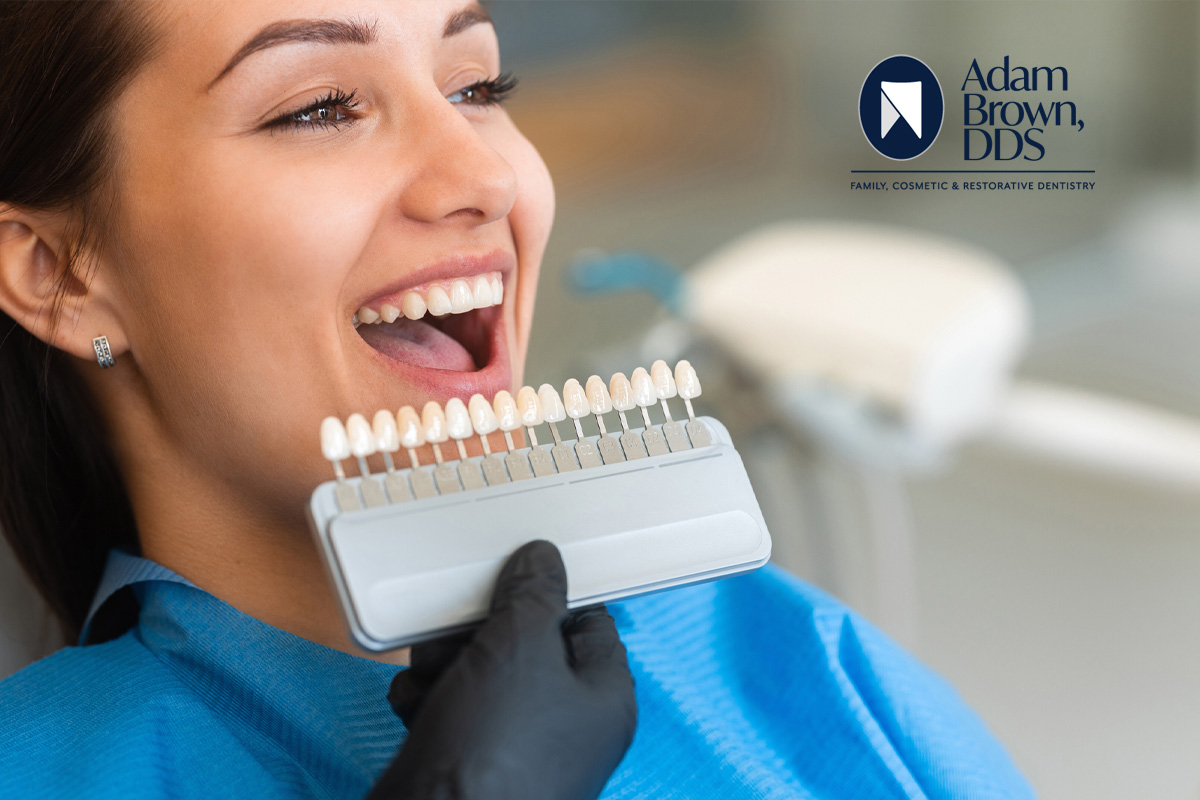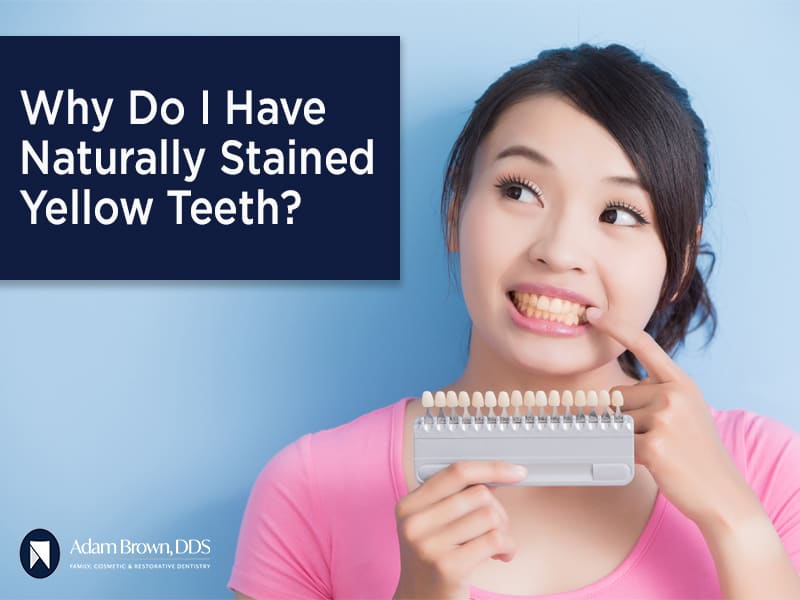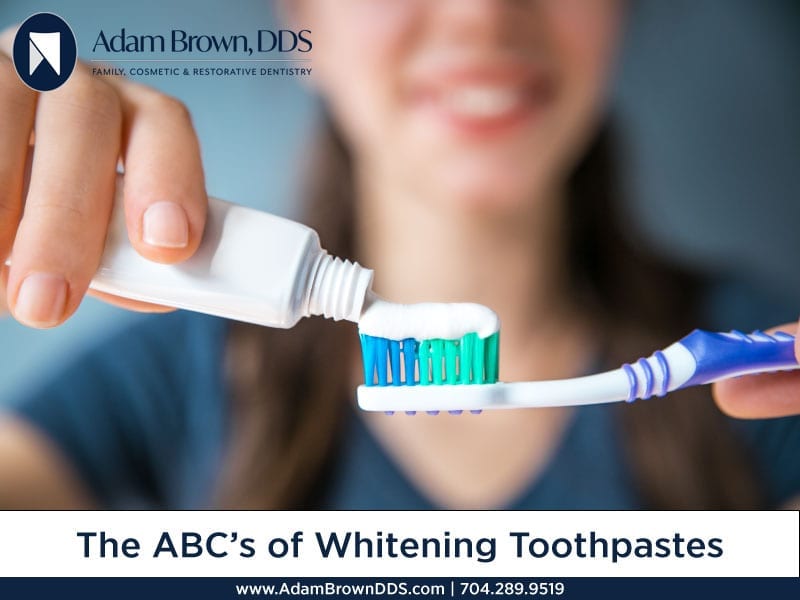Teeth Whitening for Holiday Pictures: What You Need to Know
Holiday photos are a wonderful way to save memories of family and friends coming together, but before you start snapping those party pics, have you checked your teeth? Is there a yellowish hue or an off-white shade overtaking those pearly whites? It might be time for a cleaning–and maybe a whitening treatment? But are teeth whitening agents safe–and if they are, which one to use? Let’s find out.
In this article we will explore new teeth whitening by teeth whitening professional as well as home teeth whitening procedures and products. The most important thing is to follow your dentist’s recommendations and be safe about the are of your teeth.

Most at-home teeth-whitening products and toothpastes use a bleaching agent (hydrogen peroxide or carbamide peroxide) to whiten the teeth. Since stains on the teeth are a molecular accumulation of compounds, using these bleaching agents is a good way of breaking down the molecular bonds and, therefore, lightening the color of the teeth.
Professional teeth whitening procedures use higher levels of hydrogen peroxide or carbamide peroxide and can remove stains more effectively, producing even whiter teeth–one 30-minute treatment can bring about impressive results. These advancements in teeth whitening are highly effective, but what of the side effects? And what about those of us with sensitive teeth, will at-home and/or professional whitening procedures negatively impact my oral health?
Ever since teeth whitening has become popular, there has been an uptick in increased sensitivity right along with the rise in the sales of take-home whitening products. We have realized that the harsh impacts of the chemicals used might be causing negative effects: hydrogen peroxide robs your teeth of electrons and tooth enamel begins to break down. The gums can begin to recede, exposing sensitive nerves, resulting in that hateful sting that comes at the first contact with cool air or a cold liquid. This said, not all whitening agents are bad; in fact, most all of them can effectively work to remove stains. The question to be asked is, which ones will work best for me?
Popular Whitening Methods
LED lighting for whitening teeth has proven to be a bit pricey, but still a popular method. Now that LED whitening can be done at home (you can find the devices on Amazon), more people are trying it and are seeing spectacular results. Dentists and patients are beginning to take a closer look at this advanced method of removing coffee, nicotine, and wine stains from the teeth to see if using LED lighting—or, blue lighting, as it is often called—is causing harm to users. Though the results of this particular whitening method are positive, some patients are citing enamel loss and increased sensitivity. Any loss of enamel is bad and will only make matters worse as we age since we are unable to grow our enamel back. Luckily, dentists have recently discovered an even newer method, still using LED lighting, to whiten teeth but without the negative effects. Here’s how it works: A gel is applied to the teeth then LED lights are used to trigger photocatalysts in the teeth, which then brighten and whiten. The gel is used to speed up the process and make the LED light more effective.
Though the chemicals in the gel used in conjunction with the LED lighting may not be quite as powerful as what’s used in other strips or gels, this process can still be harsh on the teeth to those who are more sensitive, but this method is still seen as a step in the right direction, as it is not as intense as other take-home whitening products.
Another popular teeth whitening technique is using charcoal toothpaste, which boasts the ability to whiten your teeth in a natural, effective manner. Unfortunately, what a lot of people don’t know is the health risks involved with this method of whitening. Using charcoal in toothpaste isn’t exactly an innovation. Even as far back as Roman times, charcoal was used as an ingredient in cleaners, and as recent as the 19th century, charcoal was used by people making homemade toothpaste.
The reality is charcoal toothpaste provides very few teeth-whitening benefits. If you are considering giving the charcoal toothpaste trend a try, we recommend you consider other whitening alternatives instead. The American Dental Association warns users that “It might not be noticeable right away, but charcoal toothpaste wears down the enamel on your teeth.” Charcoal toothpaste is harsh on the teeth and once the tooth enamel is gone, it won’t come back—ever. Because the tooth enamel is the whitest part of your teeth, this is where the color comes from. The layer underneath the tooth enamel, the dentin, is a natural yellow shade. Using charcoal toothpaste will strip away the white tooth enamel and you may end up with teeth more stained than you started with. The problem is that charcoal works at whitening initially because it is scrubbing your teeth clean, but it doesn’t take long for that scrub to diminish the enamel, which is why we suggest staying away from this method.
A Deeper Dive Into Teeth Whitening
With so many whitening products out there, how can you be sure you’re getting one that won’t cause increased sensitivity or, worse yet, one that will erode enamel? Here are three recommendations to consider when looking to whiten:
- Be extra careful with the trays and gels. This whitening system has been around the longest, and though it does whiten your teeth, it also—you guessed it—eats away at the tooth enamel. The process involves heating a tray, filling it with whitening gel, and inserting it into the mouth to form a bond. The problem with this method is that it can take weeks for results to show, so users tend to use it a lot to get the desired results. Consequently, most people who use the trays and gels report having teeth sensitivity afterward, even receding gums. So, if you feel inclined to try the trays and gels, do it sparingly and not often. It might take much longer to notice results, but this way you will maintain your oral health.
- Use caution with whitening strips as well. The famous whitening strips have been around for fifteen years or so, and they have had a lot of success. Results can show in about a week, and the process is easy: simply fold the strip over your top and bottom rows of teeth and keep them in your mouth for a short period. However, like the trays and gels, this method can have the same negative effects. If you have sensitive teeth, it is suggested not to use these at all, and even if your teeth are not sensitive, use these strips sparingly so they don’t do too much damage.
- Paint-on whitening is a no-go–stay away from this one. The paint-on method solves the problem of the whitening agent interacting with interior soft tissues, such as the gums and inner cheek, as you simply brush the whitening gel on each tooth and let it sit for a short time, but this “paint” is full of harsh chemicals that like to diminish the enamel at an accelerated rate. This method is an easy process, which is why it has become popular, but it isn’t healthy. After months, even years, of using paint-on whiteners users have noticed receding gums and increased tooth sensitivity.
The answer to the question of whether or not you should use whitening agents on your teeth is…maybe. It all depends on the state of your teeth: how sensitive they are; how strong the enamel is. The best way to diagnose the state of your teeth prior to whitening is to visit us at Adam Brown, DDS so we can make an assessment and recommend at-home and professional whitening treatments. Come see us today!








